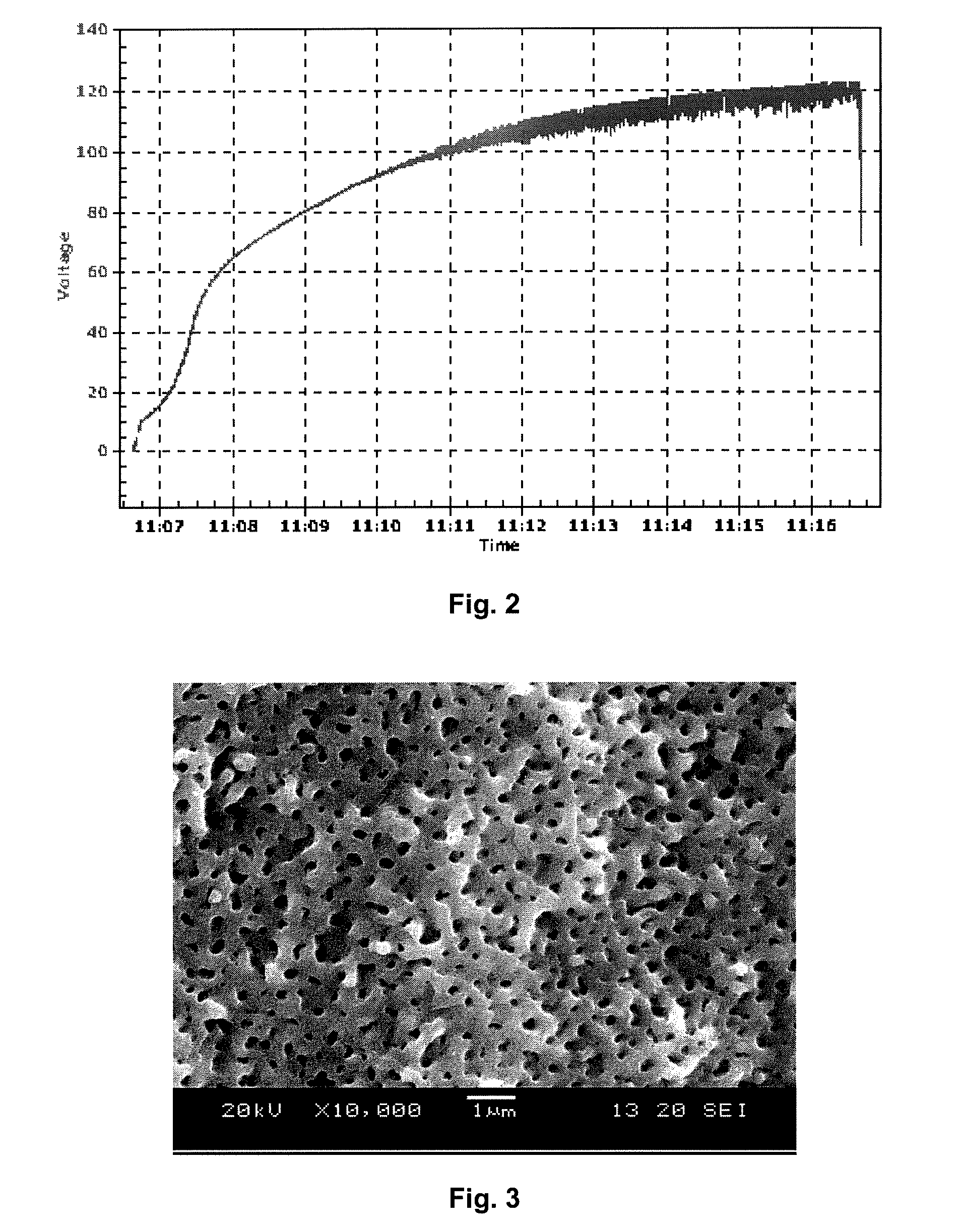Substrate for use in wet capacitors
a technology of substrate and capacitor, which is applied in the direction of surface reaction electrolytic coating, metal-working apparatus, electrochemical machining apparatus, etc., can solve the problems of low unit cell voltage of this type of capacitor and coatings that can still be easily detached
- Summary
- Abstract
- Description
- Claims
- Application Information
AI Technical Summary
Benefits of technology
Problems solved by technology
Method used
Image
Examples
example 1
[0049]The ability to form a cathode in accordance with the present invention was demonstrated. Initially, a sheet of grade #1 titanium (thickness of 120 μm, Sigma-Aldrich) was cut into two squares having a width of 10.0 millimeters for use as the metal substrates. The squares were roughened with No. 220 sand paper to remove all the visible stains and discoloration on the surface. Thereafter, a 15-mm long tantalum wire was spot-welded to the center of an upper edge of the square to facilitate subsequent processing and electrical measurements. These samples were then degreased in soap water in an ultrasonic bath for 60 minutes, rinsed 5 times in deionized water, and then vacuum dried at a temperature of 50° C. and gauge pressure of −26″ Hg for more than 2 hours.
[0050]To form the porous surface, the two samples were dipped into a solution of 1.0 M H2SO4. An electrochemical cell was created using a titanium sample as prepared above as the anode and a piece of platinum gauze as the catho...
example 2
[0054]Two (2) titanium samples were prepared as described in Example 1, except that the mesh structure was modified prior to application of the PEDT coating by heat treating in an argon atmosphere at a temperature of 750° C. for 30 minutes. The resulting structure is shown in FIG. 4. As indicated, the surface remained highly porous, although pores larger than 1,000 nanometers (1 μm) did occur at certain locations. The specific cathode capacitance of the samples was determined to be 16.44 mF / cm2 and 33.50 mF / cm2.
example 3
[0055]Two (2) titanium samples were prepared as described in Example 1, except that the mesh structure was modified prior to application of the PEDT coating by heat treating in an argon atmosphere at a temperature of 750° C. for 30 minutes in the presence of 1 gram of magnesium turnings. The resulting structure is shown in FIG. 5. The color of the surface changed from gray to black, which was possibly due to the formation of a titanium-magnesium alloy. Regardless, as shown, the surface remained highly porous and ordered. The specific cathode capacitance of the samples was determined to be 24.80 mF / cm2 and 21.05 mF / cm2.
PUM
| Property | Measurement | Unit |
|---|---|---|
| average size | aaaaa | aaaaa |
| size | aaaaa | aaaaa |
| thickness | aaaaa | aaaaa |
Abstract
Description
Claims
Application Information
 Login to View More
Login to View More - R&D
- Intellectual Property
- Life Sciences
- Materials
- Tech Scout
- Unparalleled Data Quality
- Higher Quality Content
- 60% Fewer Hallucinations
Browse by: Latest US Patents, China's latest patents, Technical Efficacy Thesaurus, Application Domain, Technology Topic, Popular Technical Reports.
© 2025 PatSnap. All rights reserved.Legal|Privacy policy|Modern Slavery Act Transparency Statement|Sitemap|About US| Contact US: help@patsnap.com



